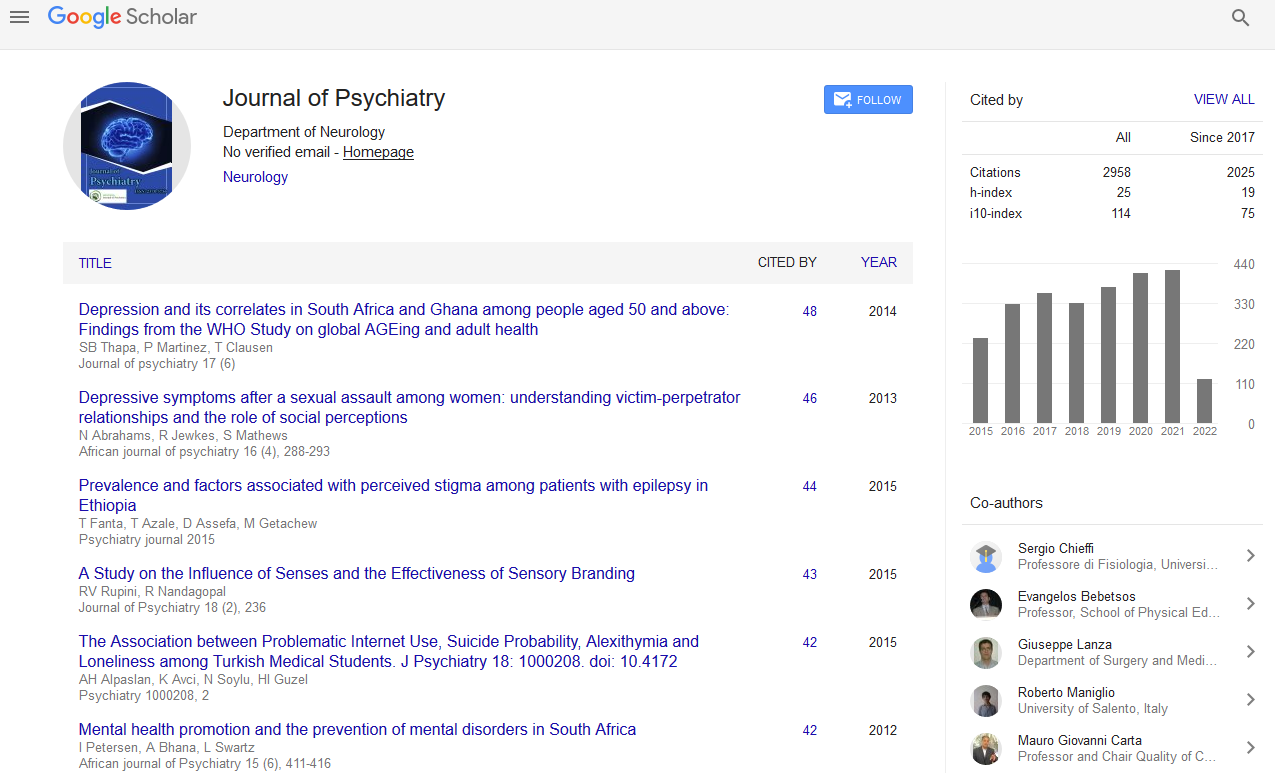PMC/PubMed Indexed Articles
Indexed In
- RefSeek
- Hamdard University
- EBSCO A-Z
- OCLC- WorldCat
- SWB online catalog
- Publons
- International committee of medical journals editors (ICMJE)
- Geneva Foundation for Medical Education and Research
Useful Links
Share This Page
Open Access Journals
- Agri and Aquaculture
- Biochemistry
- Bioinformatics & Systems Biology
- Business & Management
- Chemistry
- Clinical Sciences
- Engineering
- Food & Nutrition
- General Science
- Genetics & Molecular Biology
- Immunology & Microbiology
- Medical Sciences
- Neuroscience & Psychology
- Nursing & Health Care
- Pharmaceutical Sciences
Abstract
Dynamic Resting State Functional Connectivity Differences between Ictal and the Pre or Postictal Phase of Migraine
Noboru Imai, Asami Moriya and Eiji Kitamura
Background: Migraine is a phasic disease, with ictal, preictal, and postictal phases. Aberrant static resting-state functional connectivity (rs-FC) has been demonstrated in migraine sufferers. However, there are few studies on dynamic rs-FC during migraine.
Methods: Migraineurs in the ictal (n=16), preictal (11), and postictal (10) phases underwent 3T MRI. We compared the static and dynamic rs-FC among subjects in the ictal, preictal, and postictal phases using region-of-interest to region-of-interest analyses of 91 cortical, 17 subcortical, and 30 infratentorial areas.
Results: Analysis of static rs-FC showed no significant differences among migraineurs in the ictal, preictal, and postictal phases. Analysis of dynamic rs-FC demonstrated that migraineurs in the ictal phase had significantly less connectivity between right thalamus and right insular cortex, between left PAG and right interior frontal gyrus, and six other region-of-interest pairs than migraineurs in the preictal phase as well as significantly less connectivity between the left thalamus and left cerebellum and six other region-of-interest pairs than migraineurs in the postictal phase.
Conclusions: In our study, dynamic rs-FC analysis revealed significantly different connectivity pairs between migraineurs in the ictal and pre- or postictal phases. Our study also revealed that the migraine brain dynamically changed rs-FC during the preictal, ictal, and postictal phases.
Published Date: 2020-08-29; Received Date: 2020-08-05


